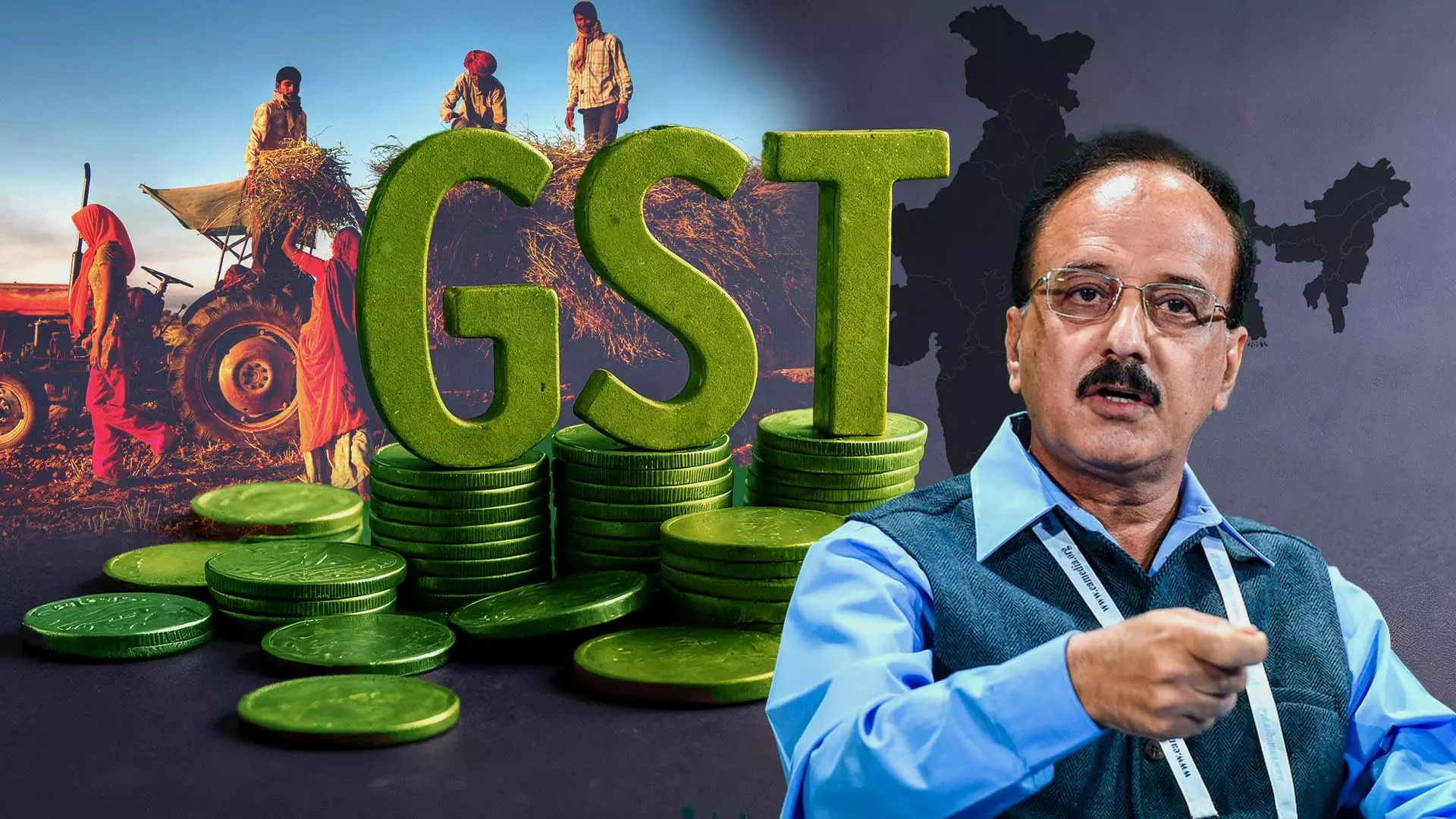
'GST 2.0 is a correction, not a reform; earlier model was exploitative'
In an exclusive interview, writer and researcher Devinder Sharma weighs in on what the GST changes mean for farmers, rural consumption, and India’s farm economy

The Centre has hailed the September 3 GST reforms as “farmer-friendly,” with cuts in taxes on farm machinery, fertilizers, and dairy products.
But are these really reforms, or simply corrections of earlier policy missteps? Writer and researcher Devinder Sharma weighs in on what these changes mean for farmers, rural consumption, and India’s farm economy.
The government has called the new GST changes “farmer-friendly.” In your view, how welcoming are these for the agriculture sector?
First of all, let’s be very clear that these changes — or what some call GST 2.0 — are definitely welcome. Farmers had been demanding corrections because the earlier GST model was exploitative. Instead of calling it a reform, I would call it a correction. Reform should have happened earlier if that was the objective. What the government is projecting as reform is essentially a long-overdue correction.
The rate cuts on farm machinery, fertilizers, and biopesticides are expected to reduce production costs. How big a burden has GST been for farmers?
The GST burden has been significant because farmers don’t have the advantage of passing on their share of the cost further down the chain. They have been carrying this additional cost for years, whether for machinery, implements, or biopesticides. Any reduction in this burden is welcome. For example, tractors are now cheaper by ₹45,000 to ₹50,000 depending on the model. That’s a real benefit for farmers.
With tractors, pumps, and irrigation equipment now taxed at just 5%, will small and marginal farmers also benefit, or will gains mostly go to bigger farmers and agribusinesses?
Small farmers will benefit too. It’s a misconception that they don’t invest in machinery. In Punjab, for instance, the state is overloaded with farm machinery — almost turning into a junkyard. Punjab requires about 1 lakh tractors but already has 5.5 lakh. This shows the fascination with machines.
While GST cuts will help, governments must ensure we don’t overload farmers with equipment that lies idle most of the time, as happened with stubble-burning machines and the happy seeder.
While GST cuts will help, governments must ensure we don’t overload farmers with equipment that lies idle most of the time, as happened with stubble-burning machines and the happy seeder. The happy seeder, once subsidised and promoted, has already become redundant after second and third-generation machines replaced it. Many of these machines are used only for two to three weeks a year and then lie idle.
Farmers dealing in raw produce are exempt from GST but cannot claim Input Tax Credit (ITC). Does this put them at a disadvantage?
Yes. Under GST, if I buy a mobile, the tax burden passes along the chain. But in agriculture, the farmer bears the entire cost burden, with no relief through ITC. That’s why GST has been so painful for farmers. Either agriculture should be fully exempt, or a mechanism should ensure farmers are not left holding the entire tax burden. The recent move to make several farm-related products zero-rated GST is a welcome correction, but the structural issue remains.
With tax-free milk and paneer and cheaper butter, ghee, and cheese, do you see the reforms boosting rural demand and household consumption?
When GST was imposed on these items, nobody said it would reduce demand. Now, with cuts, we’re told it will increase demand. That’s just economic jargon. Demand for milk, butter, or paneer doesn’t really fluctuate with GST. The real issue is why basic food items were taxed in the first place. That was regressive. Correcting it now is welcome, but let’s not call it reform — it’s simply fixing past mistakes. For years, consumers were overcharged. Now the government is calling the correction a reform.
Looking ahead, what further reforms do you think are critical for the farm sector?
The biggest reform should be complete GST exemption for agriculture. Even a 5% GST burdens farmers, because everything that adds to their input cost and reduces their already low incomes.
Demand for milk, butter, or paneer doesn’t really fluctuate with GST. The real issue is why basic food items were taxed in the first place. That was regressive.
Farmers shouldn’t be taxed when their average annual income is just ₹20,000 in nearly half the country. Imagine surviving on less than ₹1,700 a month — you can’t even rear a cow on that. Nationally, average farm family income is just ₹10,000 per month. Taxing them through GST is unjust.
We must work towards income parity between farmers and government employees. A Class 3 employee shouldn’t earn significantly more than a farmer. Until then, these so-called reforms will only remain piecemeal corrections, not real solutions.
The content above has been transcribed from video using a fine-tuned AI model. To ensure accuracy, quality, and editorial integrity, we employ a Human-In-The-Loop (HITL) process. While AI assists in creating the initial draft, our experienced editorial team carefully reviews, edits, and refines the content before publication. At The Federal, we combine the efficiency of AI with the expertise of human editors to deliver reliable and insightful journalism.

